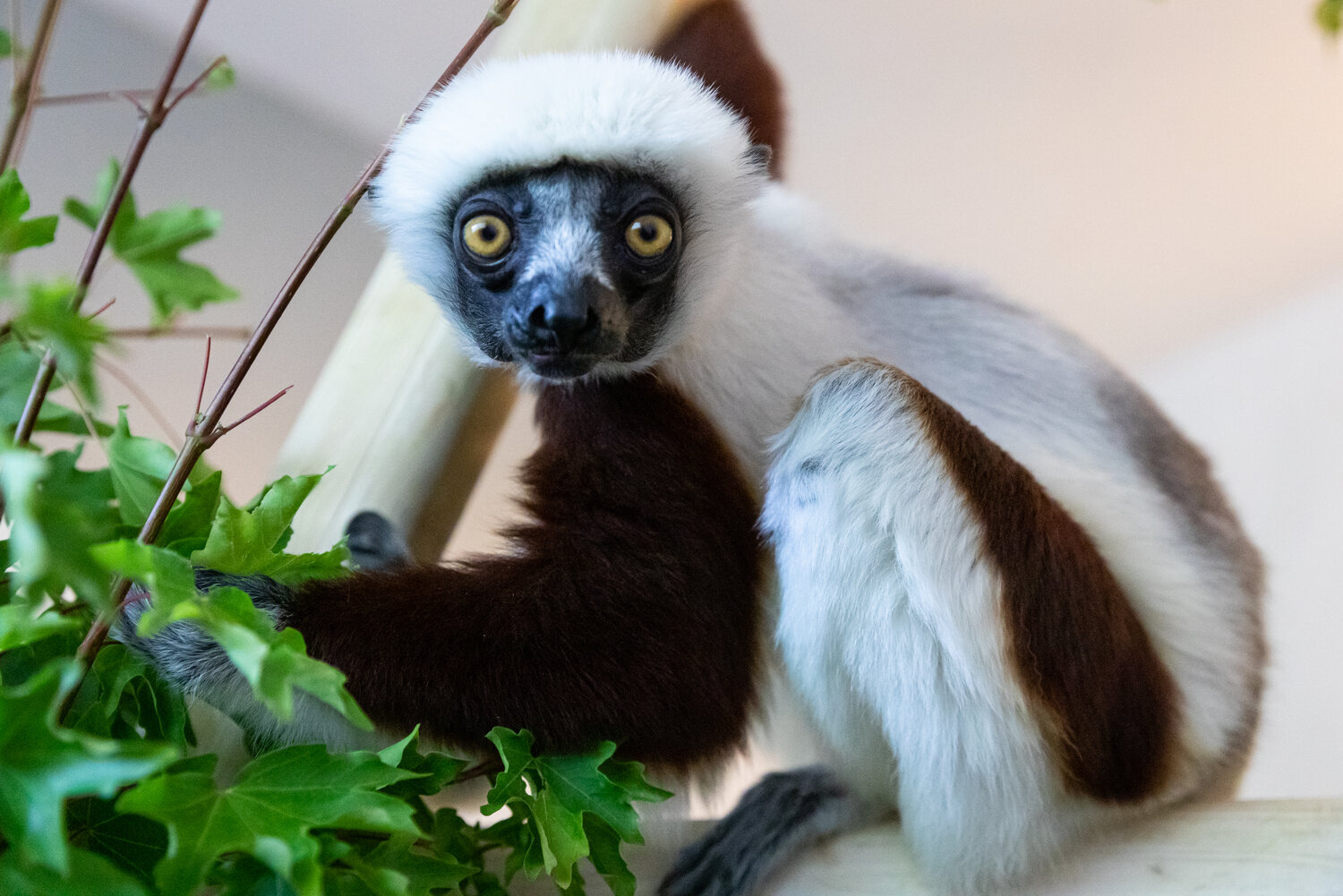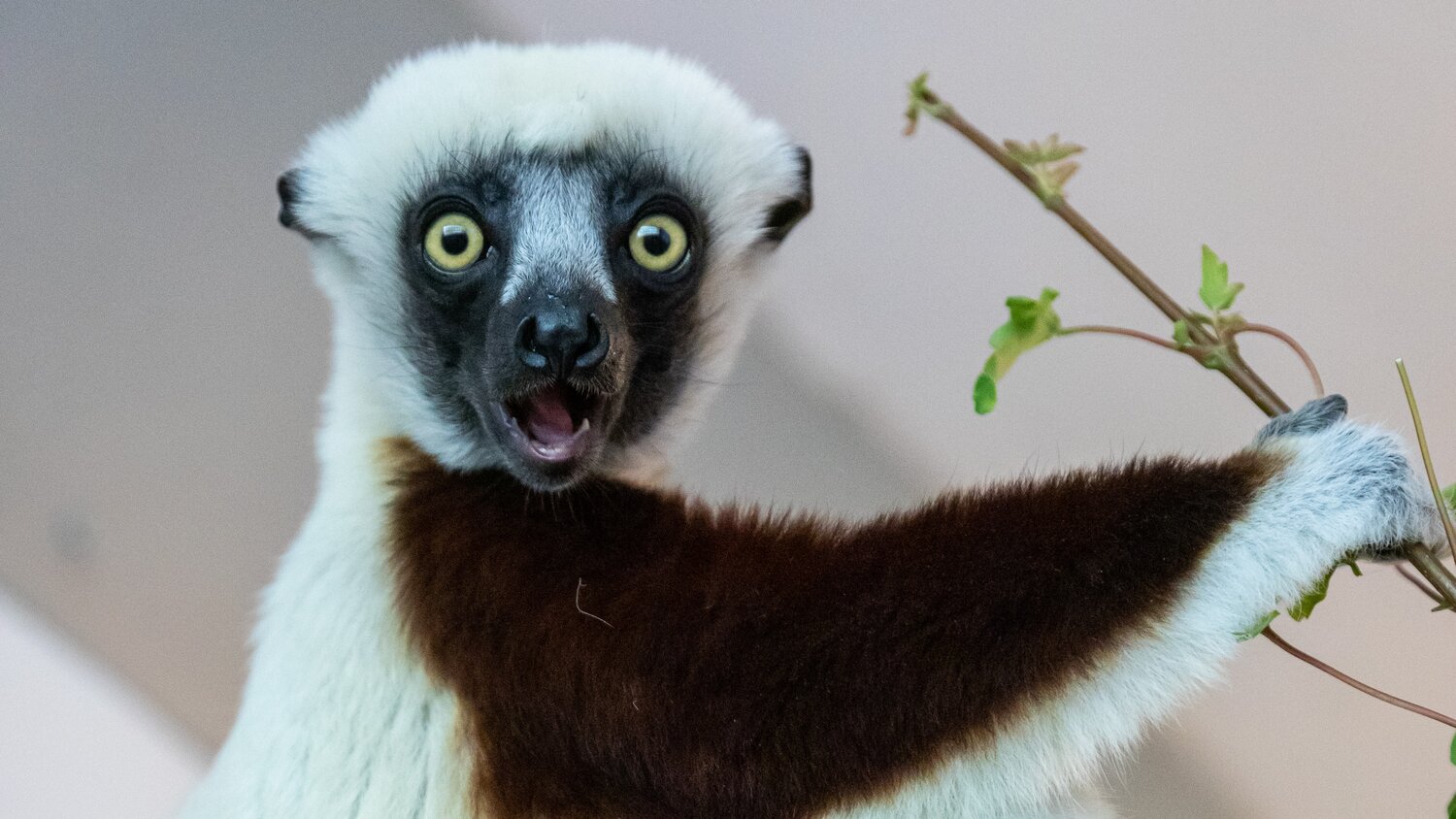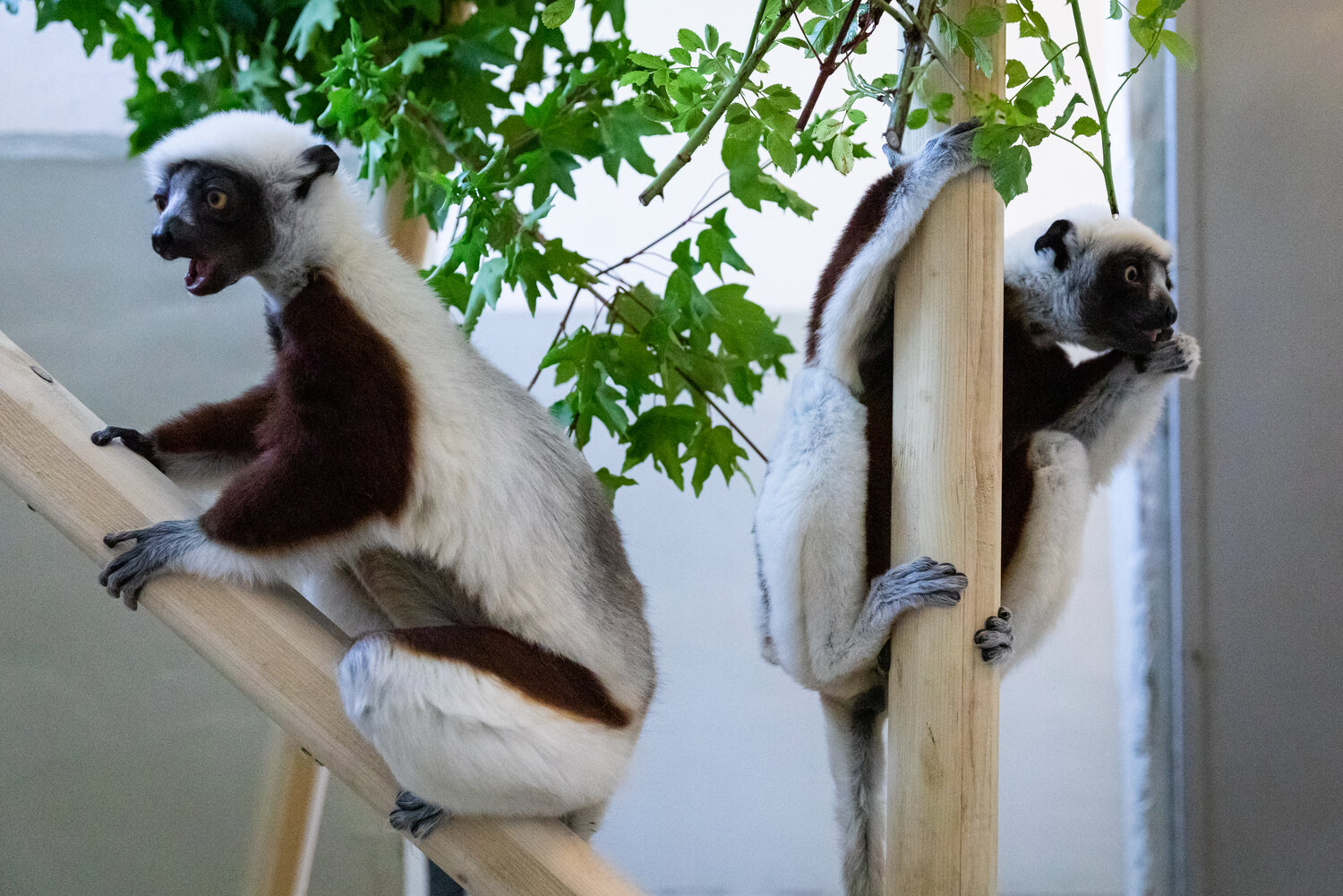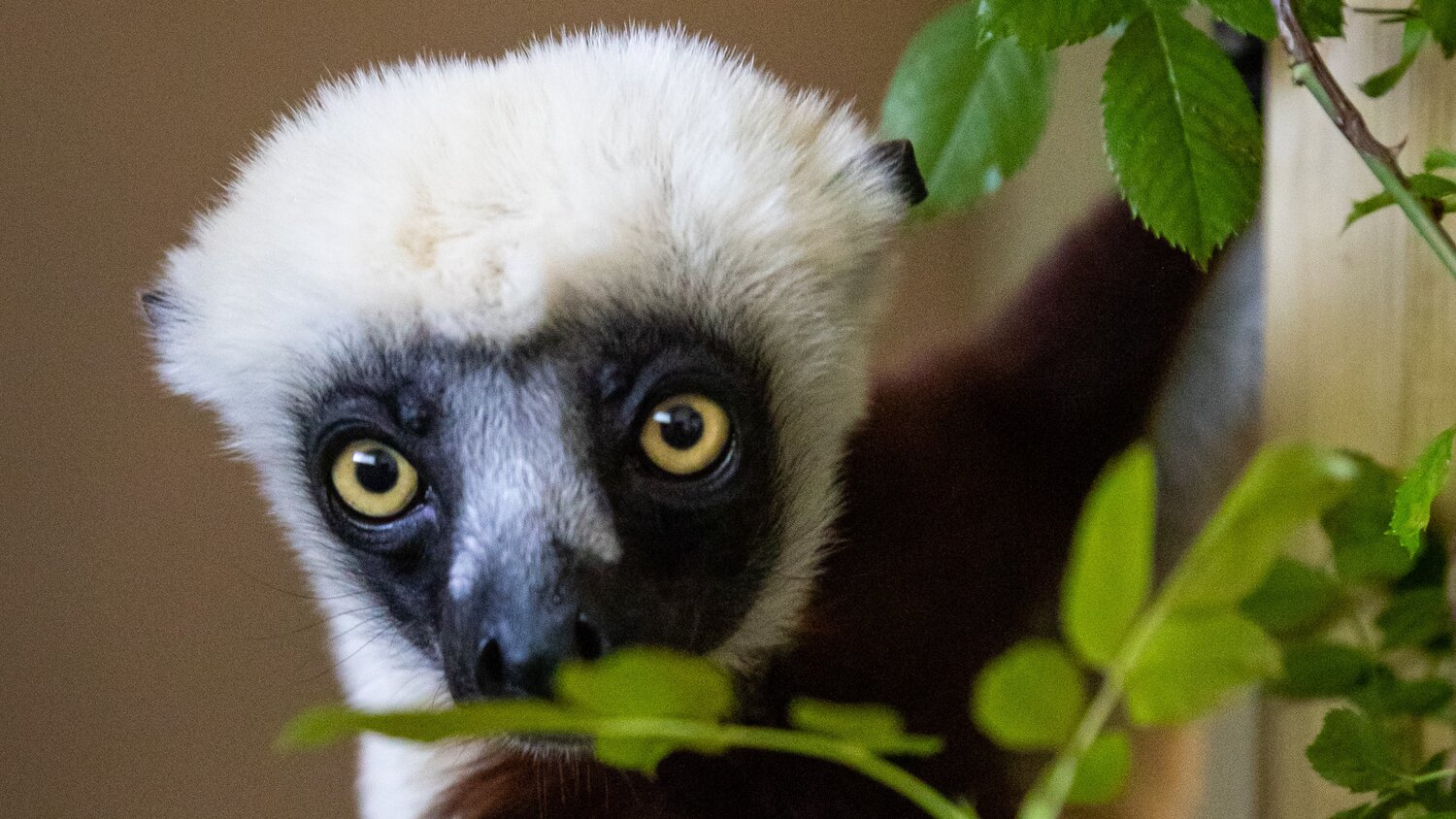Their look is extravagant, their dancing leaps are legendary - and they are among the rarest lemurs in the world: This summer, the critically highly endangered Coquerel’s sifakas set foot on European soil for the first time - their mission: to save their own species from extinction. Tierpark Berlin played a key role in setting up the new European breeding program (EEP).
Together with two other animals for Cologne Zoo, the male Hostilian (5) and the female Euphemia (10) arrived at the airport in Frankfurt at the end of May. Shortly before, another couple had traveled to the Chester Zoo in England as part of the establishment of a European reserve population. All six animals come from the Duke Lemur Center in the USA. A small team from Tierpark Berlin visited in 2019 to learn more about the special requirements of these rare primates. Among them was Dr. Andreas Pauly. Due to his long-standing commitment to the protection of various lemur species in international professional associations, he not only has a lot of theoretical knowledge, but as a zoo veterinarian and curator responsible for primates also has a lot of practical experience in captive management, care and treatment of these endangered animals. Based on this expertise, he became the appointed coordinator of the European breeding program (EEP) in autumn 2020. "Keeping these animals is very demanding, which is why the zoo and its employees were carefully checked for suitability before we were approved for two animals," explains Dr. Pauly. “The female Euphemia is much more reserved, cautious and hesitant towards us than Hostilian. As is usual with sifakas, however, she is the more dominant one compared to the male,” he describes the two newcomers who are currently still in quarantine. The sensitive animals are real food specialists; their digestion is adapted to digest leaves. After moving from the USA, Hostilian and Euphemia first had to get used to the local German cuisine: instead of sumac and mimosa, local foliage of robinia and oak is now on the menu. The leaves of field maple and roses are already among the new favorite dishes of the two gourmets.
Endangered home Madagascar
Coquerel’s sifakas - like all lemurs - occur exclusively in Madagascar. Together with their closest relatives, the indris, sifakas are the largest of all lemurs. The diurnal climbers spend a large part of their life on trees. In search of food, they move by climbing and jumping and can easily cover distances of up to 10 meters with one jump. If on the ground, the real show begins: Their jumping balancing acts on two legs are a real eye-catcher. The name "sifaka" derived from the distance-calls of some species that sound like a "si-fak". There are nine different sifaka species within the genus. Coquerel’s sifakas live in small groups of up to 3 -10 animals consisting of males, females and young animals. The ladies usually set the tone. Among the already much endangered lemurs, the critically endangered Coquerel’s sifaka, are one of the most threatened lemur species. The International Union for Conservation of Nature (IUCN) estimates that the total population has declined by more than 80% over the past three decades due to the loss of forest areas. "That is why Tierpark Berlin is not only committed to the preservation of these rare primates by building up a European insurance population, but also supports the protection of the animals and their natural habitat on site," reports Zoo and Tierpark Director Dr. Andreas Knieriem. “The Sifaka Conservation” species protection project funded by the Tierpark Berlin is committed to the protection and preservation of Madagascar's unique biodiversity. ”In addition to the Coquerel’s sifakas, the crowned sifakas and mongoose lemurs, which are also threatened with extinction, are other flagship species of this project. The Coquerel’s sifaka is one of the least studied sifaka species in Madagascar. The research work on site is carried out by scientists and students in close collaboration with the local communities. In addition to behavioural observations, recording of population numbers and structures, a current study also records the use of the remaining forest areas. For example, one aim is to find out how crowned sifakas use fragmented forest areas and move between them. Another study is currently being planned, which should provide information about possible differences in ecological niches of crowned sifaka and Coquerel’s sifaka. Long-term protection is only possible when based on well-founded, scientific knowledge about the behavior and habitat of animals.
The zoo visitors can marvel at the remarkable jumps this summer, as soon as the quarantine period ends and the monkey house is open again. There they will soon be carefully accustomed to their new home in close proximity to the red-bellied lemurs and Malagasy giant jumping rat.



